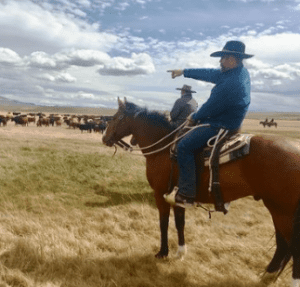Restoration
Access article.
This study evaluated how targeted grazing treatments interacted with seed rate, spatial planting arrangement (mixtures vs. monoculture strips), seed coating technology, and species identity (five native grasses) to affect standing biomass and seeded plant density in experimental greenstrips.
View article.
Debate as to whether restoration is feasible is coupled to long-standing disputes regarding the definition of restoration, whether more-damaged lands are worthy of restoration efforts given limited financial resources, and ongoing conflicts as to whether the novel ecosystem concept is a help or a hindrance to restoration efforts. A willingness to consider restoration options that have promise, yet would have previously been regarded as ‘taboo’ based on the precautionary principle, is increasing. Functional restoration is becoming more prominent in the scientific literature, as evidenced by an increased emphasis on functional traits, as opposed to a simple inventory of vascular plant species. Biodiversity continues to be important, but an increasingly expansive array of provenance options that are less stringent than the traditional ‘local is best’ is now being considered. Increased appreciation for soil health, plant–soil feedbacks, biological crusts, and water quality is evident. In the United States, restoration projects are becoming increasingly motivated by or tied to remediation of major environmental problems or recovery of fauna that are either charismatic, for example, the monarch butterfly, or deliver key ecosystem services, for example, hymenopteran pollinators.
View article.
This project inventoried 97 projects implemented by 32 organizations, most in the last 10 years. We found that beaver-related stream restoration projects undertaken mostly involved the relocation of nuisance beavers. The most common goal was to store water, either with beaver dams or artificial structures. Beavers were often moved without regard to genetics, disease, or potential conflicts with nearby landowners. Few projects included post-implementation monitoring or planned for longer term issues, such as what happens when beavers abandon a site or when beaver dams or structures breach. Human dimensions were rarely considered and water rights and other issues were mostly unresolved or addressed through ad-hoc agreements. We conclude that the practice and implementation of beaver-related restoration has outpaced research on its efficacy and best practices. Further scientific research is necessary, especially research that informs the establishment of clear guidelines for best practices.
View study.
Using a wet thermal time model for germination prediction, this study estimated progress toward germination (PTG) of 31 seedlots (10 species) as a function of hourly seedbed temperature (> 0 °C) when soils were above a water potential of −1.5 MPa. Seasonally-summed progress toward germination with a value > 1 indicates that germination will occur for that season. We used near surface (1–3 cm) soil water potential and temperature measurements collected at 24 sites in the Great Basin to determine effects of site, season, and year on PTG. On tree encroached sites, we also determined effects of tree infilling phase at time of tree removal, removal method, and microsite on estimated PTG. Soils were wet and warm enough in early spring, late spring, and fall for PTG > 1 indicating potential germination for most seedlots and species on most sites and years. Prescribed burning increased PTG as much as three times more than either tree cutting or mechanical shredding. Germination prediction could help to screen for plant materials adapted to specific sites or assess effects of seed additives or treatments that time germination to maximize seedling survival.
View abstracts.
Abstracts of Recent Papers on Range Management in the West. Prepared by Charlie Clements, Rangeland Scientist, USDA Agricultural Research Service, Reno, NV.
View article.
Fourteen wildland seed collections of Utah lotus originating from Nevada and Utah were assessed for genetic variation of a wide range of phenotypic traits and genetic relationships. Population structure estimates defined by 552 amplified fragment length polymorphism (AFLP) markers identified three primary subgroups within the Utah lotus collections, which corresponded to their geographic origin. Two collections of Utah lotus (LU-5 and LU-20) were among the top-performing collections for the phenotypic traits examined, including dry-matter yield, pod production, number of stems, canopy height, and persistence.
View article.
This study quantitatively characterized the floral guilds of 17 prevalent wildflower species of the Great Basin that are, or could be, available for restoration seed mixes. More than 3800 bees representing >170 species were sampled from >35,000 plants. Species of Osmia, Andrena, Bombus, Eucera, Halictus, and Lasioglossum bees prevailed. The most thoroughly collected floral guilds, at Balsamorhiza sagittata and Astragalus filipes, comprised 76 and 85 native bee species, respectively. Pollen-specialists dominated guilds at Lomatium dissectum, Penstemon speciosus, and several congenerics. In contrast, the two native wildflowers used most often in sagebrush steppe seeding mixes—Achillea millefolium and Linum lewisii—attracted the fewest bees, most of them unimportant in the other floral guilds. Successfully seeding more of the other wildflowers studied here would greatly improve degraded sagebrush steppe for its diverse native bee communities.
View article.
Annual growth-ring analysis was used to determine the year of establishment and the relationship between recruitment and weather events. Results indicated stand ages and locations were different (P > 0.001) among species and subspecies, and years of recruitment were strongly correlated with local and hemispheric weather patterns. Linear and multiple regressions modeled recruitment pulses for all four species. Weather-based predictor variables indicated complex interactions between recruitment and climatic controls. Pacific Decadal Oscillation index variables were prominent predictors for all four species at their associated sites. Other important local weather variables included total annual precipitation the year before recruitment, the year of recruitment, and the year following recruitment. In Nevada and the Great Basin, it is imperative that successful sagebrush seeding technologies are discovered and implemented.
View Chapter 12 of the book, Exotic brome-grasses in arid and semiarid ecosystems of the western US: causes, consequences, and management implications.
Invasive annual grass research and management in arid and semiarid ecosystems of the Western United States (USA) have historically focused on reducing weed abundance as opposed to ecosystem restoration, which addresses the underlying processes responsible for their persistence. Given the current impact of invasive annual grasses and their continued spread in this region, we identified common characteristics responsible for persistence of the most problematic exotic annual Bromus. For heavily invaded areas, these include transient, yet typically large seed banks, altered soil resource availability and litter production, displacement of native species, and frequent disturbance from fire. To better address these common characteristics for future management, we illustrate how an adaptive management framework can reduce existing uncertainty associated with the restoration of arid and semiarid ecosystems.
View article.
Time-controlled, short-duration, high intensity sheep or cattle grazing for several days in early spring removes substantial amounts of alien annual plant seed while it is still in inflorescence and opens up the sward canopy to allow light to penetrate to young, short-statured seedling perennials. This grazing event must be timed to allow perennial grass regrowth, flowering and seed set before spring soil moisture is exhausted. It must be intense enough to graze off the grass inflorescences of most alien annual grasses. The result is increased live crown cover for mature perennial grasses, reduced decadent dead-center growth forms in bunchgrasses, and improved light availability to tiller bases which promotes basal bud activation and new vegetative and reproductive tiller formation. These perennial grass responses constitute what managers term improved plant vigor.



